Tabanus spodopterus also known as the black horned giant horsefly is a species of biting horse-fly. It is widespread in Europe, but only one doubtful specimen has been found in the United Kingdom.

Trichopsomyia is a genus of Hoverflies, from the family Syrphidae, in the order Diptera.

Actina chalybea is a species of 'soldier flies' belonging to the family Stratiomyidae subfamily Beridinae.

Philipomyia aprica is a species of horse fly of the family Tabanidae, subfamily Tabaninae.

Compsilura is a genus of tachinid flies in the family Tachinidae from Mozambique, Malawi and South Africa.
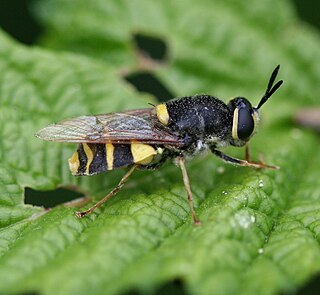
Stratiomys potamida, the banded general, is a European species of soldier fly.

Oxycera is a genus of flies in the family Stratiomyidae.

Beris is a genus of flies in the family Stratiomyidae. They are small flies with reduced palpi. The scutellum has spines and the abdomen has seven visible segments. Their eyes are contiguous in the male.

Hybomitra aterrima is a species of horse flies in the family Tabanidae.

Tabanus quatuornotatus is a species of biting horse-fly.
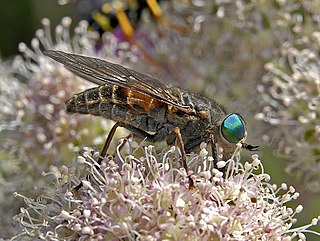
Hybomitra montana, the slender-horned horsefly, is a species of horse flies in the family Tabanidae.
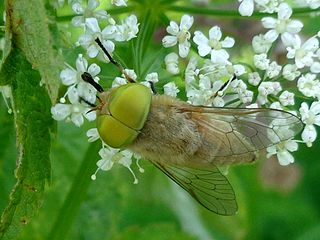
Atylotus fulvus is a species of 'horse flies' belonging to the family Tabanidae.

Crumomyia nitida is a species of fly in the family Sphaeroceridae, the lesser dung flies. It is found in the Palearctic. The larvae live in a wide range of moist decaying organic materials where they feed on micro-organisms.

Xylophagus is a genus of flies in the family Xylophagidae.
Trimerina madizans is a species of shore flies, insects in the family Ephydridae.
Gloma is a genus of flies in the family Empididae.
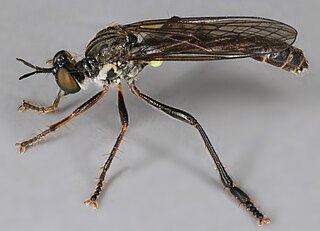
Dioctria hyalipennis is a Holarctic species of robber fly in the family Asilidae.
Hybomitra solstitialis is a Palearctic species of horse fly in the family Tabanidae. Continental authorities apply the name solstitialis to the coastal species Hybomitra ciureai of British authorities and regard British solstitialis as var. collini of Hybomitra bimaculata.
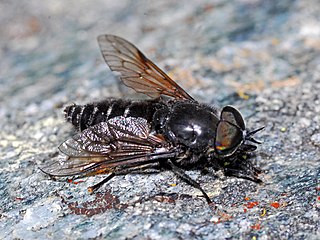
Dasyrhamphis umbrinus is a species of horse fly, a fly in the family Tabanidae, native to Europe and near East Asia.
Atrichops is a genus of flies in the family Athericidae.















